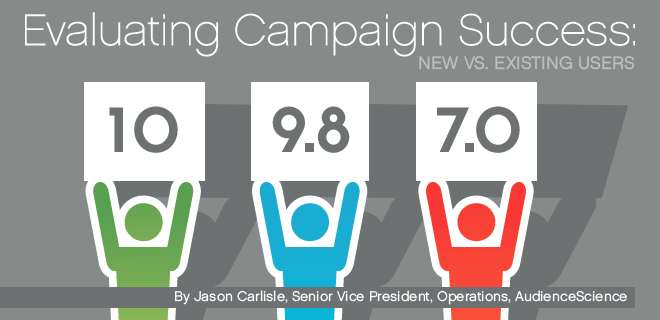
“The only man I know who behaves sensibly is my tailor; he takes my measurements anew each time he sees me. The rest go on with their old measurements and expect me to fit them.” – George Bernard Shaw
Stand back and look at the advancements in online display ads and it’s truly impressive: real-time inventory access, unique ad formats, greater availability of data, brand attribution methods, advanced targeting options. The industry has made big strides to create a better environment for more efficient online advertising. As a result, we’re now seeing sizable budgets moving online from major CPG companies and other brand advertisers, and hundreds of millions more dollars will be spent online as innovation helps advertisers succeed with their online campaigns.
Despite all these improvements, advertisers are still making common mistakes when evaluating the success of their online campaigns: no clear definition for campaign success, no proper test and control methods, and too much analysis paralysis with over-abundant data. The pitfalls are many, but one I see advertisers tripping on constantly is prescribing the same bar for success for both new and existing clients.
To illustrate this, let’s say Donald Trump challenges the teams on “Celebrity Apprentice” to get high-rollers among the elite 1% to attend his upcoming charity golf tournament. What would happen if he gives Team 1 a list of contacts who attended the tournament last year, but he withholds the list from Team 2? When Team 1 signs up dozens of participants and Team 2 only brings in a handful, which team did a better job? Who would The Donald fire?
This is acquisition vs. retention in a nutshell. The first team, armed with data and dealing with known customers, is obviously going to end up with better results. But how do you know which team is better when the playing field isn’t level?
Leveling Out Expectations
Most people in online advertising will tell you that the best performing campaigns are retargeting campaigns. They’re shooting fish in the proverbial barrel bringing in customers who are already at the bottom of the purchase funnel, so you as the advertiser should expect better results.
The bar the retargeting partner is held to for monetizing an existing customer should be higher than the bar for recruiting and monetizing entirely new customers. Advertisers must gauge how difficult it is to convert each type of customer (new vs. existing) and place a distinct ROI upon each action based upon difficulty.
Despite how obvious this point seems, it’s often overlooked today. Some buyers are just being lazy and painting everything with the same brush. Sometimes though, even when an advertiser has the best intentions and asks their media partner to target new clients and return visitors separately, the lines between these audiences can get blurry over time.
How? Let’s say a user who has never been to Groupon before sees a handful of ads from a Groupon campaign targeted to new visitors. A week later this same user visits the Groupon site, and then sees another handful of ads intended for previous Groupon visitors. A week after that, the user finally converts and buys a Groupon. What bucket should that user fall into? New user, retargeted user, or both? Having a consistent attribution methodology is an absolute requirement for sorting out these types of questions.
It is important for advertisers to market to both new prospects and existing users. Targeting brand-new users helps build a larger customer base, and retargeting existing users improves the revenue earned from each customer. The beauty of online advertising is that campaigns can be tailored to each audience and results can be measured separately.
It takes thoughtful attribution, careful campaign design, and a flexible ad server to be able to analyze performance for existing users vs. new users across different media partners with clear rules of engagement. However, it’s well worth the advertiser’s effort and critical to understanding the true performance of online campaigns—to be certain that you get the perfect fit, every time.
 |
Macro-level changes are coming, and you can sieze the opportunities that follow at OPS NY. This event will bring together digital advertising leaders and ops professionals to discuss a rapidly evolving landscape and develop strategies for monetization. Register today for OPS NY which will be held Oct. 4, 2012. |